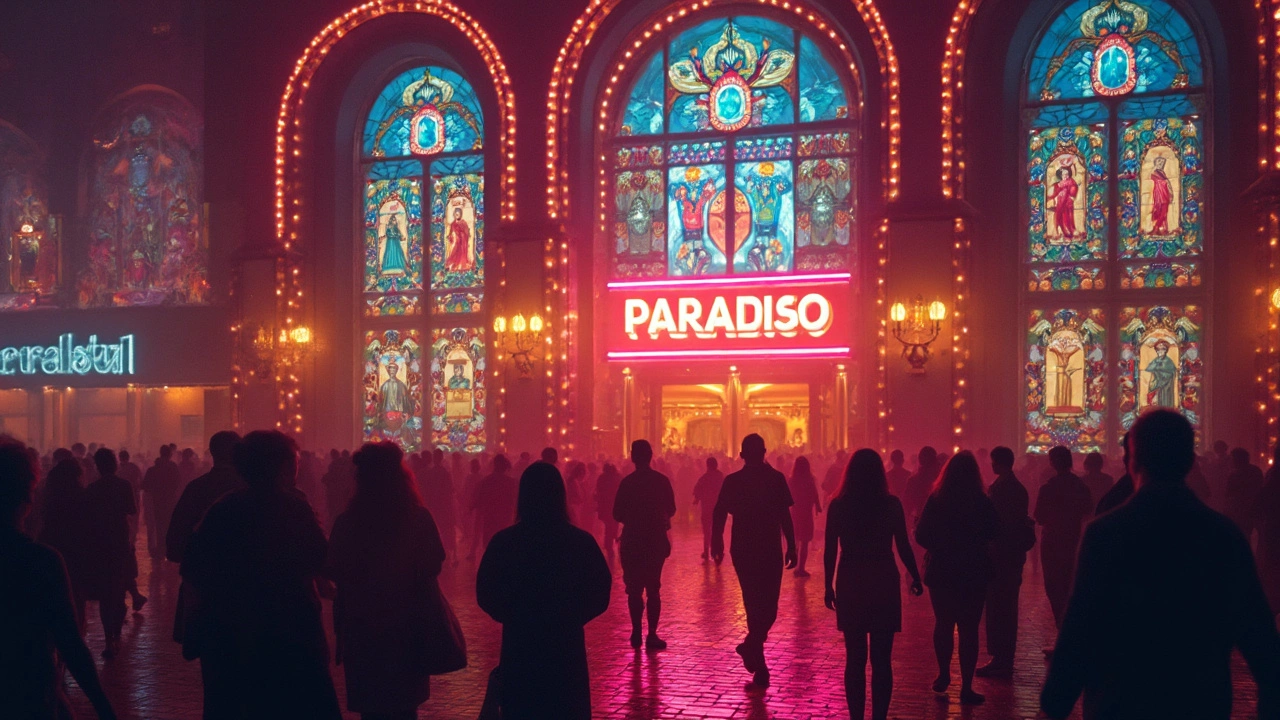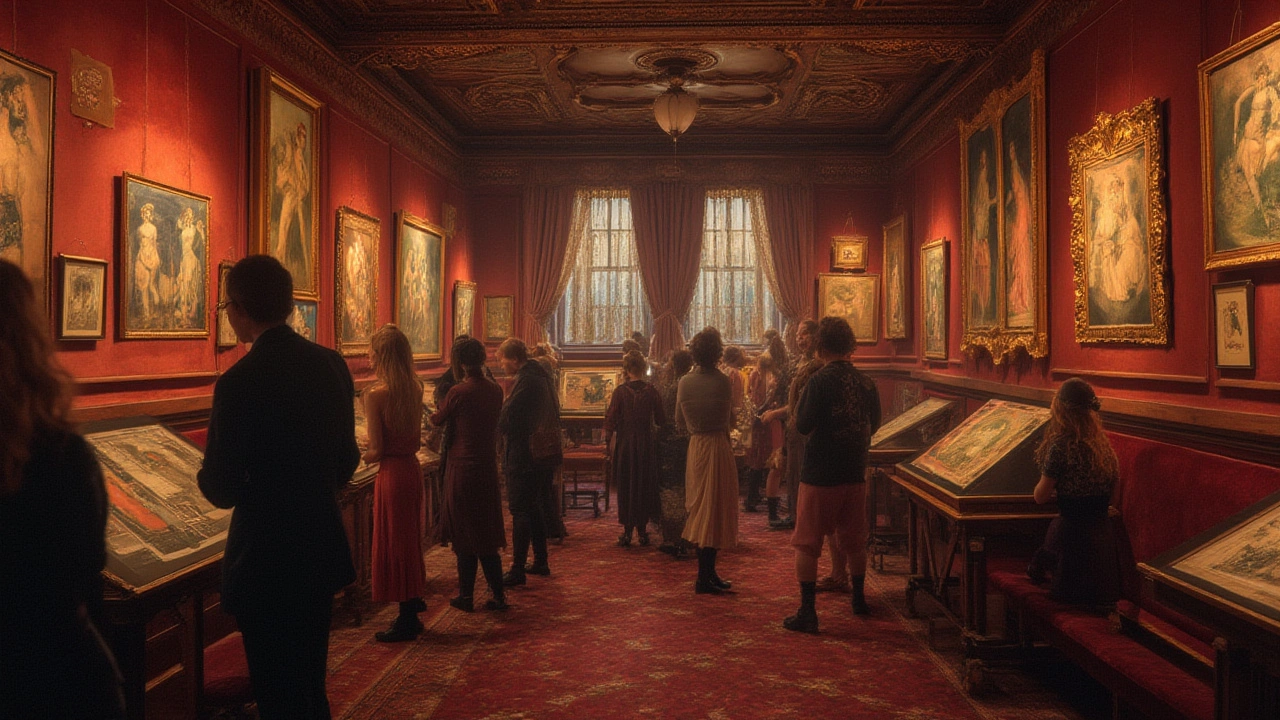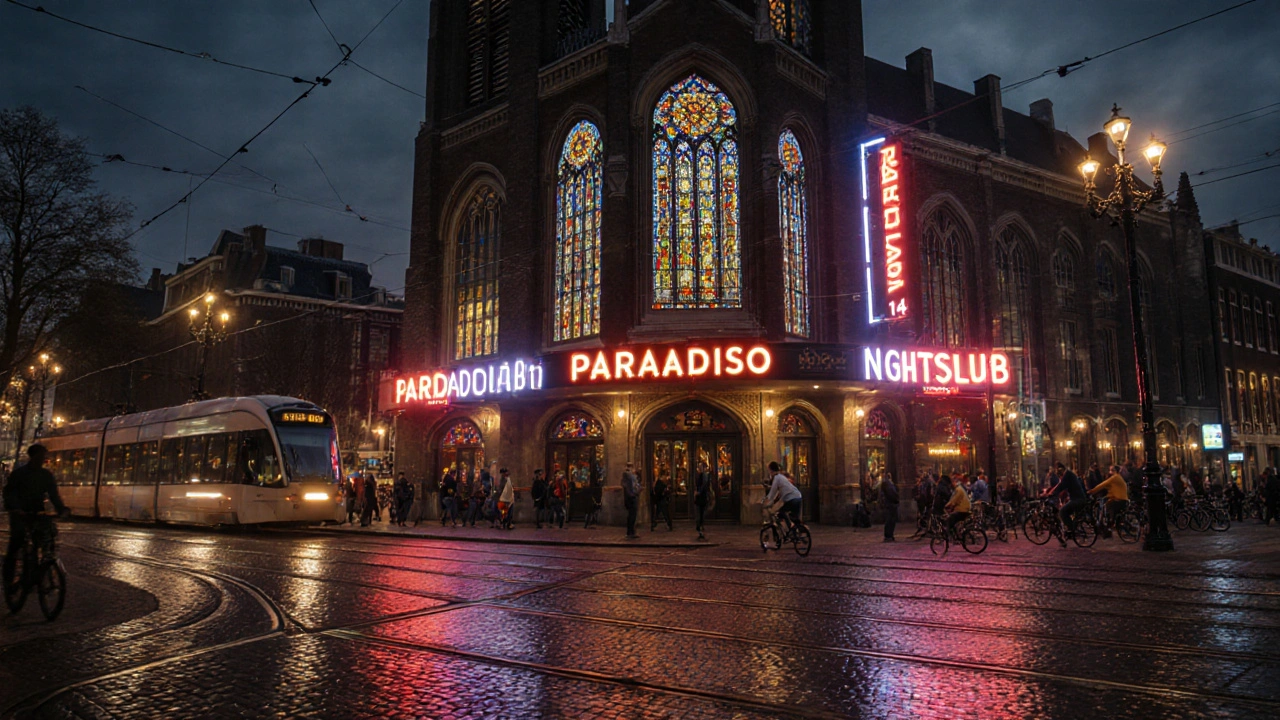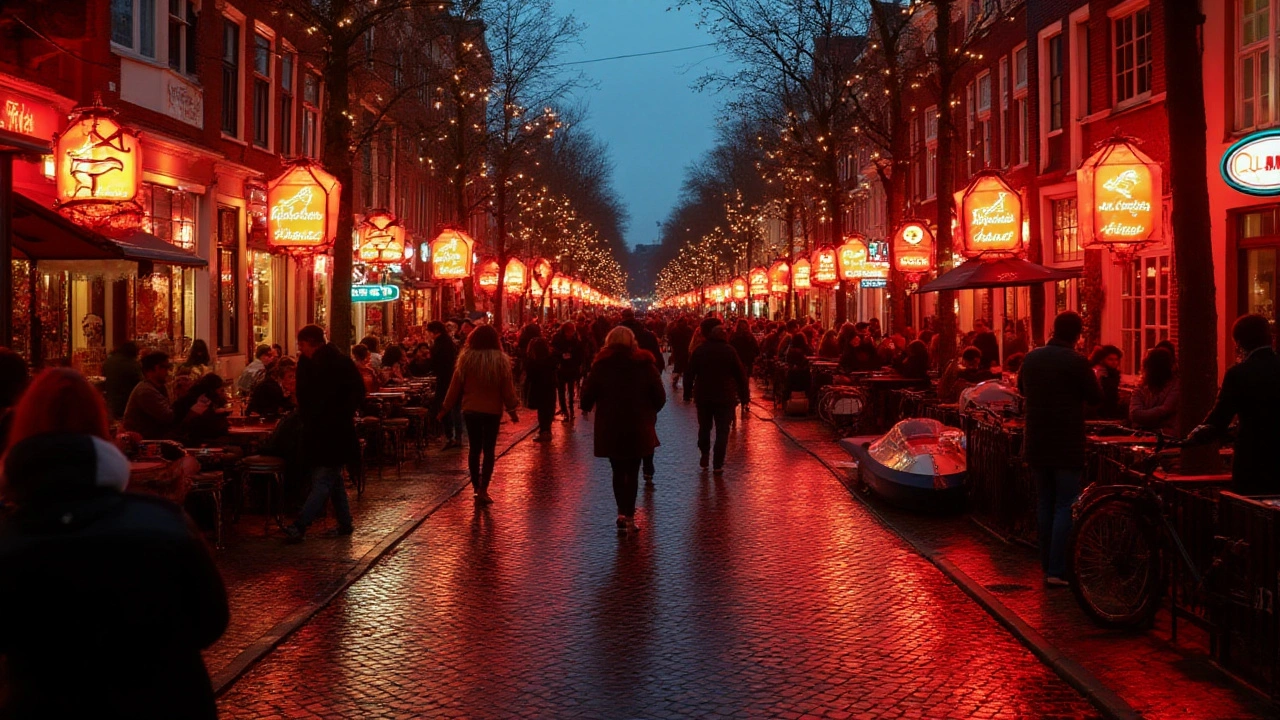
In the heart of Amsterdam, a city renowned for its canals and tulips, lies the infamous Red Light District, offering a unique blend of history, culture, and unfiltered nightlife. Here, the allure of vibrant neon lights intertwines with curiosity, drawing travelers into its cobbled streets to explore the unexpected. While whispers of the district may stir enticing tales and imaginations, the reality is a fascinating tapestry of Amsterdam's liberal ethos and historical evolution.
Visitors often find themselves traversing this lively district in search of an experience beyond the ordinary—a peek into the myriad of vibrant storefronts beckoning with their scarlet hues. However, as one strolls past the display windows, there's more just dollars or euros to consider. This journey involves understanding cultural nuances and appreciating the eclectic mix of Amsterdam traditions that have shaped the district. Embark on this adventure informed and curious, ready to uncover what makes the heart of Amsterdam beat in its most famous district.
- Historical and Cultural Overview
- Understanding the Costs
- Tips for First-Time Visitors
- Modern Attractions Beyond the Red Lights
Historical and Cultural Overview
The Amsterdam Red Light District, with its blazing crimson allure, is more than just square meters of illuminated desires. Its history stretches back to the 14th century when Amsterdam was burgeoning as a mercantile harbor. The traps were set then: sailors arrived after months at sea, pockets heavy with pay, seeking pleasure in exchange for coins. This era wasn't merely about the carnal but was linked deeply with the economic winds that steered Amsterdam into the Zaan's embrace. Historical documents reveal a tapestry woven of trade, vice, and accepted indulgence, underscoring how sex work has been an accepted part of the city's social fabric.
In the ensuing centuries, the Dutch prudently established regulations that would steer the course of this district, imparting layers of acceptability rooted in both legality and ethics. This acceptance was not shallow; it was grounded in a belief in tolerance and personal freedom—the very ethos keeping the city's heart perpetually progressive. A significant cultural influence, therefore, stems from this Dutch ethos of pragmatism which respects individual choices as long as they harm none. It's a mutual understanding between the purveyor and the seeker, harmonized amidst alluring hues and whispers of promise.
The Dutch crime novelist A.C. Baantjer once aptly noted, "Amsterdam is like the rings of a tree: It gets older as you get closer to the center." The inscription exemplifies how the city's rich history surrounds its heart, including the Red Light District.
As we delve deeper into the artistry of such an intriguing locale, we glimpse how the Red Light District serves as a cultural potpourri, where language and an interplay of social norms meld seamlessly. Walking through these streets isn't just a passage through history; it's a sensory experience—a melange of sights, sounds, and scents that interlace to seduce the curious traveler. The aromatic waft of cannabis mingles with the crisp winter air, lending an intoxicating mix that lingers long after one turns the corner. The sight of lit windows nestling behind ancient façades narrates a testament of time where each pane crystallizes stories of passion and exchange.
Behind the veils of these windows rest engaging narratives traced back to theatrical displays like the infamous “tippelzones” permitted in the late 20th century, crafted to safeguard the workers’ safety. Revolutionary as it was, it painted a space—not of shame—but of choice. Walking through the Red Light District, one notices how it stands not merely as a marketplace for services but as a testament to cultural consciousness and inclusion. Here, **Amsterdam tourism** thrives as the district morphs into a state-approved affair where its boundaries are observed with respect and divine discretion. Often, tourists find much more than what they seek—a perceptual experience into the liberal visions that expertly straddle the line between norm and taboo.

Understanding the Costs
When venturing into Amsterdam’s Red Light District, the cost is more than a mere transaction; it’s a confluence of economics, culture, and the subtle yet profound art of interaction. As the red-hued windows cast their inviting glow, each experience is uniquely tailored and can vary widely in price. Engaging with the services here isn't akin to a typical transaction; it's a curated dance between curiosity and the storied traditions of Amsterdam's most famous streets. To begin with, the base price for many encounters typically starts around 50 euros for a standard session, lasting approximately 15 to 20 minutes. However, as the interaction unfolds, additional services can incur an added fee, negotiated through a mutual and respectful understanding.
Many visitors, drawn by the allure of the district, often wonder about the factors influencing these costs. The price reflects not only the service but the ambiance and discreet privacy the district offers in a city famed for its openness and acceptance. Geographical factors play a part too; proximity to notable landmarks such as the Oude Kerk or the striking canals can cause variations in cost. Moreover, the time of day can affect pricing; evenings, with their bustling energy and vibrant crowds, often see peak rates. An article in the Amsterdam Ledger once stated, "The Red Light District isn’t just about the service, it’s an economic microcosm influenced by the city’s heartbeat."
Recommendations for those exploring this part of Amsterdam include carrying enough cash, as many transactions still prefer traditional exchange methods over cards, a quirk reflecting the district’s preference for anonymity. Taking a stroll around the area is advised before making any commitments, allowing one to gauge the varied options and pricing while soaking in the atmospheric charm that is uniquely Amsterdam. Some establishments outline their prices clearly, ensuring there's no confusion once inside. However, it’s essential to approach with an open mind and mutual respect, understanding that every encounter can be a personal and unique experience, shaped by the city’s historical ethos.
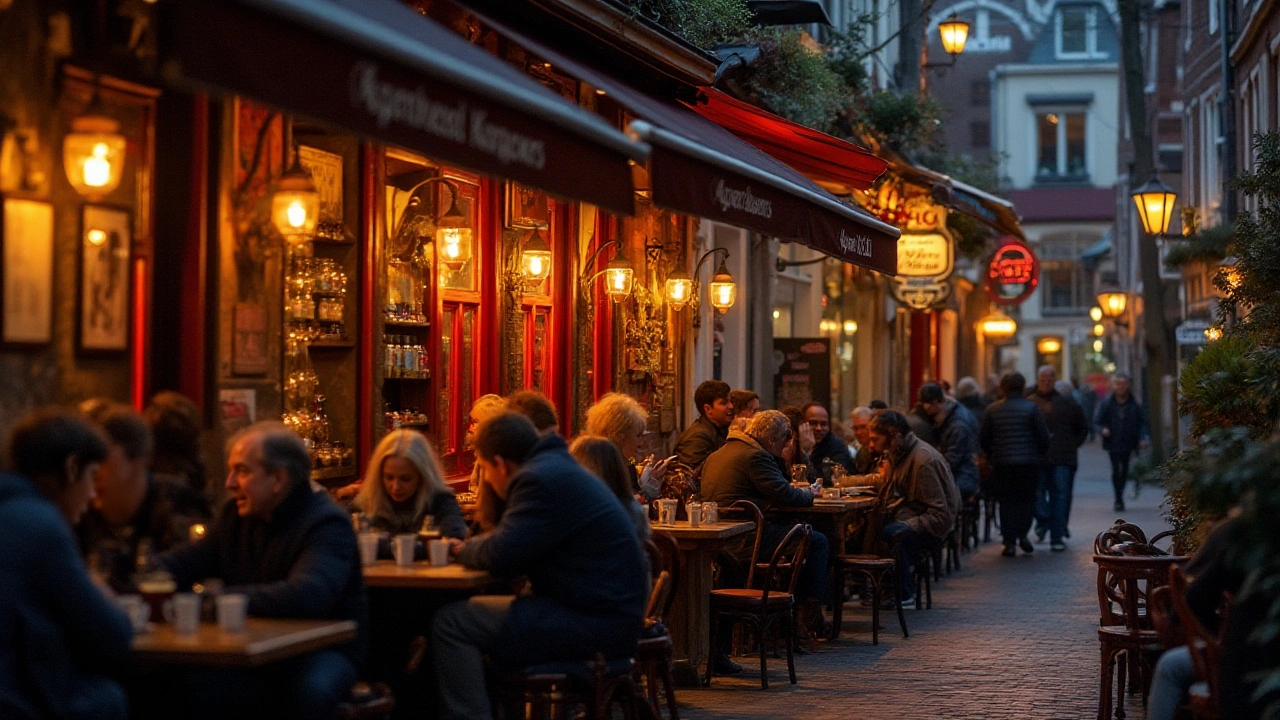
Tips for First-Time Visitors
Embarking on an adventure through Amsterdam's Red Light District can be an enticing yet daunting journey, especially for those stepping into its vibrant world for the first time. The district is more than a spectacle; it represents the melting pot of Amsterdam's storied history and its bold modernity. As you weave through the labyrinth of neon-illuminated streets, you'll find that preparation and insight can enhance your experience significantly. A foundational understanding of this dynamic locale isn't just beneficial; it's essential for truly appreciating its cultural and socio-economic nuances.
The first tip for any visitor is to approach the experience with an open mind and respect for the businesses and individuals that inhabit these storied streets. Photography within the district is considered highly disrespectful; thus, cameras should remain tucked away to honor the privacy of those working behind the iconic windows.
"The Red Light District is not just a tourist step; it's a deeper dive into Dutch liberal attitudes found through centuries," reflects art historian Lisbeth Groenteman.Understanding such local sentiments can guide your interactions and interpretations within the district.
A delightful way to immerse yourself is through local guided tours, which provide an insider's view of the area. These tours often include captivating anecdotes about the historical evolution of the district and the laws that have spurred such a unique red-light culture. As you stroll past landmark sites, such as De Oude Kerk, you might hear stories of daring entrepreneurs and the seismic shifts that have defined the city's approach to its adult entertainment industry over the years. Engaging with such insights can offer a layered perspective that goes beyond the facade of red-lit windows.
Safety is another crucial consideration. While the district is known for its liberal and permissive nature, it remains vital to remain aware of your surroundings. Traveling in groups, remaining on well-trodden paths, and avoiding secluded areas at odd hours are prudent steps. Located at the heart of a bustling city, the district is largely safe; however, exercising a degree of street smarts can ensure a pleasant experience. Smoking and carrying integral identification should align with local regulations to avoid unnecessary fines.
Lastly, consider stepping into the plethora of cultural venues the district offers beyond its famed lights. Venues like the Prostitution Information Centre (PIC) provide educational insights into the prostitution industry, while venues such as Erotic Museum and Red Light Secrets Museum of Prostitution invite curiosity into the history and evolution of sex work. Understandably, these locations offer a deeper appreciation of the evolving tapestry of Amsterdam, capturing both the intimate and historical kaleidoscope that has drawn countless to the Red Light District for decades.
By understanding the interplay of history, social norms, and hospitality found in the Red Light District, your journey is bound to resonate with more than just the colorful allure of its lights. It's an exploration of culture and the celebration of Amsterdam's defiance, readiness to adapt, and boldness in showcasing its diverse identities.
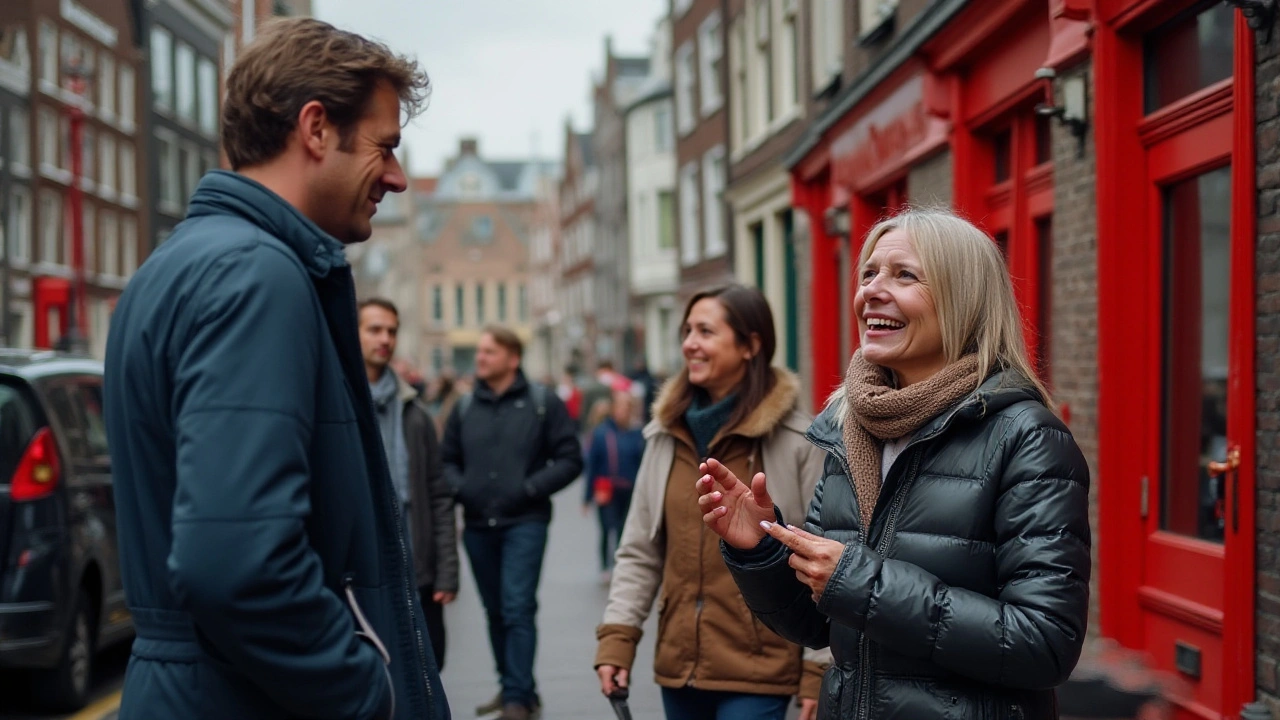
Modern Attractions Beyond the Red Lights
The Red Light District, or De Wallen as it is locally known, extends far beyond its legendary windows into a myriad of modern attractions that captivate tourists visiting Amsterdam. The district's pulsating heart is a confluence of history and contemporary innovation, where every corner whispers tales of old juxtaposed with today's vibrant experiences. Amidst the soft luminescent glow of red, some modern-day wonders redefine the district's allure. Many visitors are often drawn towards the burgeoning culinary scene. Here, one can find quaint bistros nestled between centuries-old brick facades, serving everything from traditional Dutch pancakes to exotic fusion dishes that tempt the most discerning palate. These eateries exemplify the district's commitment to blending tradition with innovation, offering fine gastronomy wrapped in an experience that dances on the line between the past and present.
For those yearning for artistic expression, the district offers more than its seductive promises. The Amsterdam Red Light District is home to various galleries and artistic spaces that invite curious minds to explore visual delights. It is not uncommon to stumble upon art installations and exhibitions that thoughtfully engage with the themes of identity, erotica, and freedom, creating thought-provoking conversations among the spectators. Artists from around the world converge here, inspired by the environment's unique mix of freedom and creativity. As one walks through these vibrant spaces, the interplay of light and shadow mirrors the complex narratives of the district itself. Some locals believe that art imitates life here, painting colorful strokes on the once-muted canvases of history.
Another key attraction that draws visitors beyond the signature red hues is the array of guided tours that delve into the district's storied streets. Knowledgeable guides, often possessing insider anecdotes and local lore, reveal fascinating insights and hidden gems that lie off the beaten path. Such tours illuminate the district's vibrant history, cultural nuances, and how it has continually evolved in response to societal shifts. Amsterdam tourism companies frequently offer themed excursions, promising a deeper understanding of how the area balances its hedonistic reputation with community responsibilities. As part of a sustainable tourism initiative, some tours emphasize responsible exploration, encouraging visitors to respect the delicate ecosystem that sustains both its heritage and emerging attractions.
Amid the colorful modernity that intertwines with the age-old charm of Amsterdam's most talked-about district, visitors may find themselves captivated by unique experiences that lie beyond the notorious beckoning of scrupulous desires. The district takes pride not only in being a place of indulgence but also as a beacon of the city's long-held liberal values. The fusion of historic appeal with modern-day attractions undoubtedly ensures that the Red Light District remains a quintessential part of Amsterdam's identity, offering something memorable to every traveler who braves its intriguing offerings.

